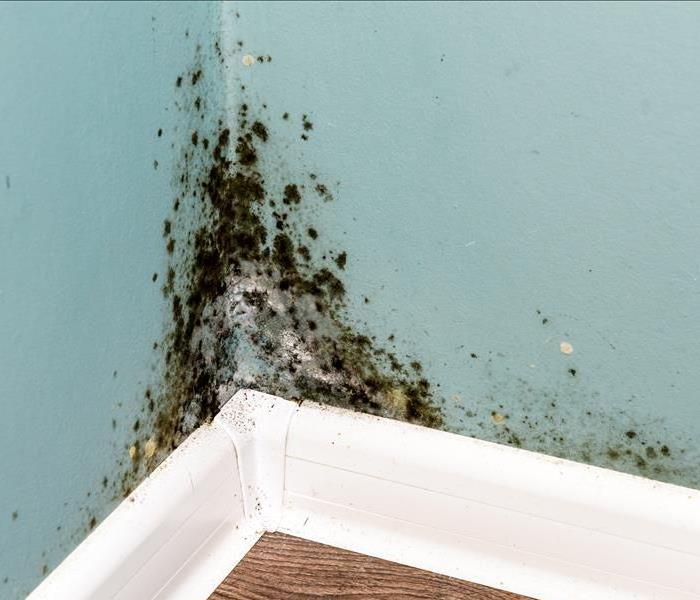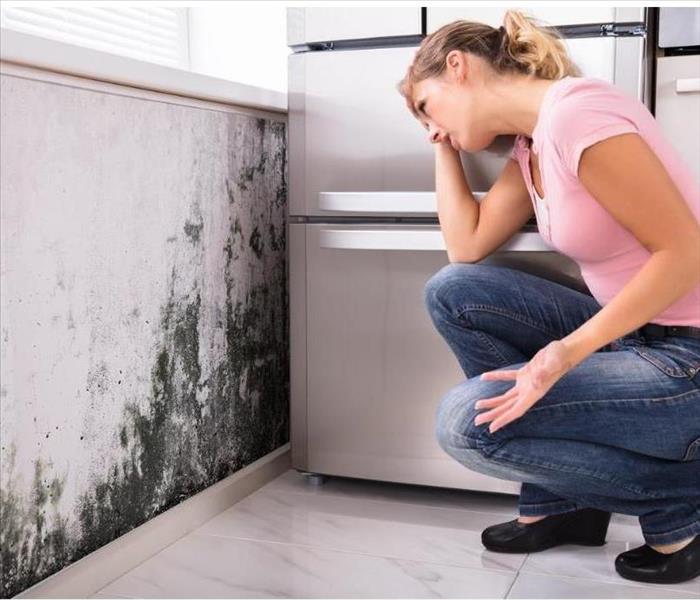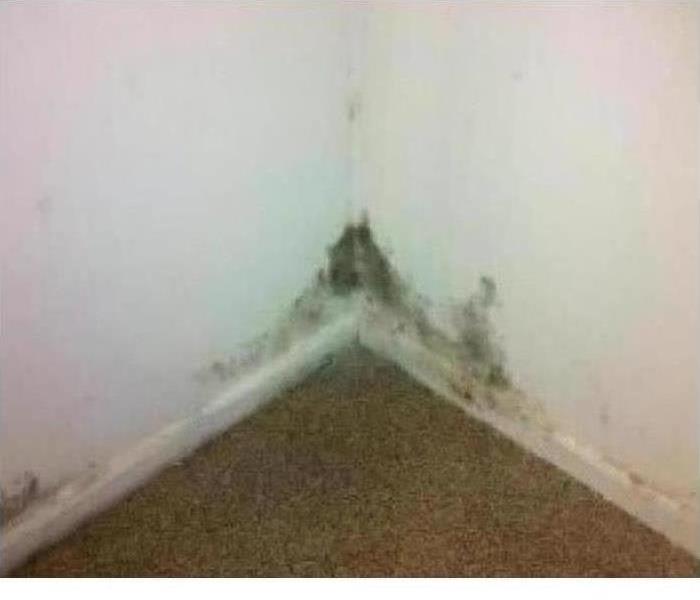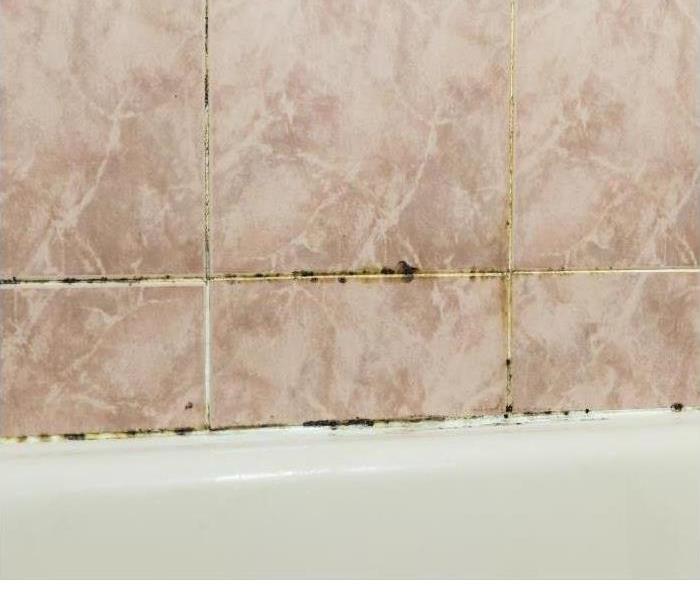Mold Removal or Remediation?
Since microscopic mold spores exist naturally almost everywhere, indoors and outdoors, removing all mold from a home or business is impossible. Some restoration businesses advertise “mold removal” and even guarantee to remove all mold. This is a fallacy.
A qualified restoration company understands the science behind mold and mold growth. Professionals have the training and expertise to remediate the mold in your home or business. Mold remediation focuses on getting mold levels back to normal, natural levels.
Every mold damage scenario is different and requires a unique solution, but the general mold remediation process stays the same.
Do You Know How to Prevent Mold in Your Home?
Unless you are attempting to make blue cheese or penicillin mold is not something that you want to be messing with or run across in your home or business. Mold can grow anywhere with a lot of moisture present, such as around leaks in roofs, windows, or pipes as well as paper products, cardboard, ceiling tiles, and wood products. Mold can be a difficult and costly problem to fix, but it also can produce harmful allergens and irritants that can compromise your health.
According to the Mother Nature Network here are nine ways to prevent moisture indoors, and the mold that thrives on it.
Identify problem areas in your home and correct them.
Dry wet areas immediately.
Prevent moisture with proper ventilation.
Equip your home with mold-resistant products.
Monitor humidity indoors.
Direct water away from your home.
Clean or repair roof gutters.
Improve air flow in your home.
Keep mold off household plants.

Mold and Your Health
Exposure to damp and moldy environments may cause a variety of health effects, or none at all. Areas that are likely to have mold, such as compost piles, cut grass, and wooded areas.
Molds are part of the natural environment. Outdoors, molds play a part in nature by breaking down dead organic matter such as fallen leaves and dead trees, but indoors, mold growth should be avoided. Molds reproduce by means of tiny spores; the spores are invisible to the naked eye and float through outdoor and indoor air. Mold may begin growing indoors when mold spores land on surfaces that are wet. There are many types of mold, and none of them will grow without water or moisture.
The key to mold control is moisture control. If mold is a problem in your home, you should clean up the mold promptly and ix the water problem.
Bathroom Remodeling After Mold Damage
When mold infests an home, the damage and the restoration costs can vary widely. If caught quickly after the mold begins growing, both are minor, and the emphasis stays on cleaning and removing mold from surfaces. If the mold has had months to grow unnoticed, then the focus can shift to removal and replacement of affected property, both personal and structural.
When this happens, Albany homeowners have a unique opportunity for remodeling their homes, especially the bathroom. technicians can remove the tiles, shower, bathtub, and other bath items, and replace them at the direction of the homeowner.

Problems with Mold
Microscopic mold spores naturally occur almost everywhere, both outdoors and indoors. This makes it impossible to remove all mold from a home or business. Therefore, mold remediation reduces the mold spore count back to its natural or baseline level. Some restoration businesses advertise “mold removal” and even guarantee to remove all mold, which is a fallacy.
Consider the following mold facts:
Mold is present almost everywhere, indoors and outdoors.
Mold spores are microscopic and float along in the air and may enter your home through windows, doors, or AC/heating systems or even hitch a ride indoors on your clothing or a pet.
Mold spores thrive on moisture. Mold spores can quickly grow into colonies when exposed to water. These colonies may produce allergens and irritants.
Before mold remediation can begin, any sources of water or moisture must be addressed. Otherwise, the mold may return.
Mold often produces a strong, musty odor and can lead you to possible mold problem areas.
Even higher-than-normal indoor humidity can support mold growth. Keep indoor humidity below 45 percent
Molds, Mildews
Molds are fungi that can be found both outdoors as well as indoors. Due to the fact that live are more prone to molds and mildews because of the over all moister in the air. Molds and mildews mostly grows in warm, damp and humid conditions such as ours. offer many services to our community, one of the being mold remediation.
Mold vs Mildew
Mold and mildew are both types of fungi, but they are strikingly different when it comes to size, color and texture. Both mold and mildew are attracted to moist warm areas, where they can grow and spread easily; such as food, walls, ceiling, showers, etc. Mold is usually fuzzy or slimy in appearance and shaped in spots that can have different colors, such as blue, green, yellow, brown, grey, black or white. Mildew on the other hand can be described as a specific type of mold, and has a flat growth that remains on the surface and can be easily removed.
A Little Bit About Mold
Mold sounds like a very scary thing. Most people have it in there minds that once you see or smell mold, that you are already sick. This could not be more wrong. Lets take a second real quick and learn a little about mold. Mold is a fungus, and it grows virtually everywhere on Earth. aren’t exactly sure how many mold species there are, but it seems to be in the tens of thousands. When addressing any mold growth in your home, it’s important to understand which type of mold you’re working with. It’s also necessary to be aware of the common places to find mold in your home. Not to mention, the environment in which your home resides in. If there is more moisture, there is more of a chances for mold.

Mold Remediation and Restoration
Mold, under the right conditions and with a little time can grow. What might seem like a small water leak can actually lead to a more serious mold problem. Mold is naturally occurring, it’s natures way of turning things back into the dirt; mold is a natural recycler. But in your home or in your business, it’s unhelpful and not welcome. When you find out that you have a mold problem it can be initially unsettling. Because mold has a seemingly good press agent and gets a lot of good coverage in the news, there is a lot of hysteria surrounding the subject. That coverage can be frightening. In a home or business, mold should be addressed properly, with the right tools and with the right training.
Understanding Mold
Confusion and misunderstanding surround the topic of mold and mold remediation. Some restoration businesses even make claims to remove all mold from a building. This is a fallacy. Mold spores occur naturally almost everywhere, both indoors and outdoors. These microscopic spores float along in the air and can enter a home or business through windows and HVAC systems.
Consider these facts:
Mold is present almost everywhere, indoors and outdoors.
Mold spores are microscopic and float along in the air and may enter your home through windows, doors, or AC/heating systems or even hitch a ride indoors on your clothing or a pet.
Mold spores thrive on moisture. Mold spores can quickly grow into colonies when exposed to water. These colonies may produce allergens and irritants.
Before mold remediation can begin, any sources of water or moisture must be addressed. Otherwise, the mold may return.
Mold often produces a strong, musty odor and can lead you to possible mold problem areas.
Even higher-than-normal indoor humidity can support mold growth. Keep indoor humidity below 45 percent
The Mold Remediation Process
Every mold infestation is different, from the amount of mold to the types of materials affected. Each scenario requires a unique solution, but the general process stays the same
The steps listed below illustrate our process for a “typical” mold remediation infestation:
Emergency Contact
Inspection and Mold Damage Assessment
Mold Containment
Air Filtration
Removing Mold and Mold-Infested Materials
Cleaning Contents and Belongings
Restoration

How to tell if your apartment has mold—and how to get rid of it
It doesn’t matter where you live a solid, old-school prewar or a brand-new modern building—you may still have to deal with the problem of mold.
a water damage and mold remediator at Restorations, a restoration company, reports that his company deals with newer buildings with mold problems more than older ones.
Newer buildings don’t breathe as much, and if there is some kind of leak or water damage, mold can grow.” Older buildings tend to have fewer materials that mold can grow on, whereas engineered flooring, sheetrock, and processed materials are “junk food for mold,”
Pro Tip: Many types of mold present a serious health hazard. And getting rid of mold is expensive. “Very often, your landlord, co-op or condo building should bear the cost. To get them to act responsibly, you may need to take legal steps,”
“An attorney who knows what they are doing can find the leverage points of your situation. Sometimes, all it takes is a letter from your lawyer.”